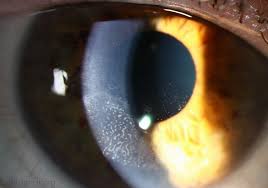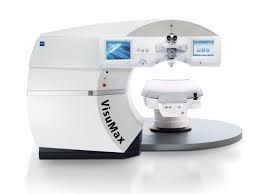Table of Contents
ToggleYes, you can swim after LASIK, but timing and precautions matter. Wearing proper swim goggles is essential to protect your healing eyes and ensure a safe swimming experience.
LASIK surgery offers the convenience of having crystal-clear vision without needing glasses or contacts, even for activities like swimming. However, as with any medical procedure, you must follow post-operative care instructions to ensure a smooth recovery. Swimming is no exception—while the LASIK procedure itself is quick and effective, understanding when and how to return to the water is key.
This guide will walk you through all the do’s and don’ts of swimming after LASIK and explain why goggles play a crucial role in your recovery.
How Soon Can You Swim After LASIK?
The short answer is that you can typically return to swimming two to three weeks after LASIK, provided your eyes have healed and your doctor has cleared you for it. Here’s why timing is so important:
- Healing Time for the Corneal Flap
During LASIK, a microscopic flap is created in the cornea, which is then reshaped using a laser. While this flap begins healing quickly, it takes some time to fully adhere to your eye. Exposing your eyes to water too soon could cause irritation or even increase the risk of complications.
- Risk of Infection
Pools, oceans, lakes, and hot tubs may contain contaminants, such as bacteria or chemicals like chlorine, which can irritate your eyes or lead to infections. Avoiding swimming until your doctor gives you the go-ahead reduces these risks.
Always follow your LASIK surgeon’s instructions when returning to activities like swimming to help your eyes recover properly.
Why Are Goggles Important After LASIK?
Even once your eyes have healed, wearing goggles while you swim is essential. Goggles provide a protective barrier that minimises exposure to chemicals, bacteria, and debris. Here’s why they are critical for a safe return to water activities after LASIK:
- Protection From Chemicals
Chlorinated pools and saltwater oceans can irritate post-LASIK eyes, even weeks after surgery. Proper goggles act as a shield, keeping irritants out of your eyes.
- Barrier Against Bacteria
Natural bodies of water, like lakes and rivers, can carry harmful pathogens. Goggles reduce your chances of exposing healing tissues to these risks.
- Prevent Eye Rubbing
Swimming without goggles often causes reflexive eye rubbing due to water splashing or irritation. Rubbing your eyes too soon after LASIK can disrupt the healing process and dislodge the corneal flap.
- Enhanced Comfort
Properly fitting goggles improve your overall experience, allowing you to focus on swimming instead of worrying about your eyes.
Choose swim goggles that form a comfortable, watertight seal around your eyes and are adjustable for a snug fit.
How to Choose the Right Swimming Goggles After LASIK
Not all goggles are created equal, especially for post-LASIK patients. Here are some tips to keep in mind when selecting goggles for swimming:
- Choose a Watertight Seal: Look for goggles that are specifically designed to minimise water leakage. Brands with silicone gaskets or “suction fit” designs are ideal.
- Prioritise Comfort: Opt for goggles that have soft, flexible materials to reduce pressure on your eyes while providing a secure fit.
- Anti-Fog Features: Many goggles come with an anti-fog coating that keeps your vision clear during your swim—a plus for post-LASIK clarity.
- UV Protection: If you’re swimming outdoors, pick goggles with UV protection to safeguard your healing eyes from harmful sun exposure.
Popular brands like Speedo, Arena, and Aqua Sphere offer high-quality goggles suitable for post-LASIK swimmers.
When Can You Swim Without Goggles?
Even with LASIK healing fully complete, it’s generally recommended to wear goggles whenever you swim. Without the barrier of glasses or contact lenses, your eyes are exposed to external irritants more than they were before. While occasional splashes of clean water might not harm your eyes after healing, regular swimming without goggles can lead to irritation over time.
If you do decide to take a dip without goggles, consider the following:
- Ensure the water is clean and free of harsh chemicals or debris.
- Avoid rubbing your eyes if water enters them.
- Limit your time in the water to reduce exposure.
However, erring on the side of caution and wearing goggles is always the safer bet for your eye health.
What About Other Water Activities After LASIK?
Swimming isn’t the only water activity to consider after LASIK. Here’s how to safely participate in other water-based activities:
- Hot Tubs and Spas
Stay away from hot tubs and spas for at least a month post-surgery. The high levels of chemicals and bacteria in these water sources increase the risk of infection.
- Snorkelling and Diving
Snorkelling and scuba diving can typically be resumed four weeks after LASIK. A high-quality mask that seals well is crucial to keep water and pressure from affecting your eyes.
- Water Sports
Activities like kayaking, water skiing, or paddleboarding are usually safe after three weeks, provided you wear protective eyewear like goggles or specialised sports glasses.
Post-Swimming Eye Care Tips
Even with goggles, it’s important to take care of your eyes after swimming to ensure comfort and protect your post-LASIK vision. Here are some tips:
- Rinse With Fresh Water: After swimming, rinse your face and eyes gently with clean, lukewarm water to remove residual chemicals or salt.
- Use Artificial Tears: To combat dryness or irritation, use preservative-free artificial tears as recommended by your doctor.
- Avoid Eye Rubbing: Refrain from rubbing your eyes even if they feel itchy after swimming.
- Check for Discomfort: If you experience redness, irritation, or blurred vision after swimming, contact your doctor immediately.
Benefits of Swimming After LASIK
Swimming after LASIK can be a liberating experience once you’ve healed. No more foggy goggles or uncomfortable contact lenses! Here’s why many LASIK patients look forward to swimming post-surgery:
- Ease and Comfort: Enjoy swimming without the hassle of glasses or contact lenses, freeing you to focus on your strokes and surroundings.
- Enhanced Vision: LASIK provides excellent visual clarity, which means you’ll be able to see underwater (with clear goggles) and appreciate the beauty of aquatic environments.
- Confidence Boost: The convenience and simplicity of swimming without corrective eyewear often inspire a new level of confidence in LASIK patients.
Final Word on Swimming Post-LASIK
Swimming after LASIK is entirely possible and enjoyable when approached with the right precautions. By waiting until your eyes are fully healed and wearing high-quality swim goggles, you can protect your eyes and enjoy the water safely. Remember, every patient is different, so always consult your LASIK surgeon if you’re unsure when to resume swimming or have specific concerns.
Your vision after LASIK is a long-term investment. Prioritising eye care both in and out of the water ensures you’ll enjoy your new, clear sight for years to come.













